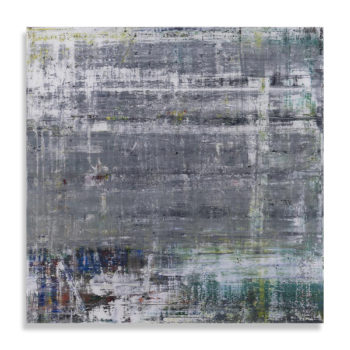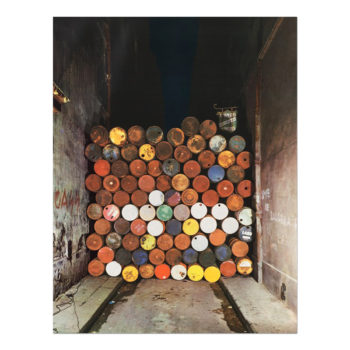“Painting is the making of an analogy for something nonvisual and incomprehensible; giving it form and bringing it within reach. And that is why good paintings are incomprehensible.” – Gerhard Richter
Gerhard Richter is known for a prolific and stylistically varied exploration of the medium of painting, often incorporating and exploring the visual effects of photography. “I like everything that has no style: dictionaries, photographs, nature, myself and my paintings,” he says. “Because style is violent, and I am not violent.” In the early 1960s, Gerhard Richter began to create large-scale photorealist copies of black-and-white photographs rendered in a range of grays, and innovated a blurred effect (sometimes deemed “photographic impressionism”) in which portions of his compositions appear smeared or softened—paradoxically reproducing photographic effects and revealing his painterly hand. With heavily textured abstract gray monochromes, Richter introduced abstraction into his practice, and he has continued to move freely between figuration and abstraction, producing geometric “Colour Charts”, bold, gestural abstractions, and “Photo Paintings” of anything from nudes, flowers, and cars to landscapes, architecture, and scenes from Nazi history. Gerhard Richter absorbed a range of influences, from Caspar David Friedrich and Roy Lichtenstein to Art Informel and Fluxus. German, b. 1932 in Dresden, Germany.
Gerhard Richter, Cage (P19-1)






